DP Newton Thomas Sigel ASC used KODAK EKTACHROME 16mm Film to time-travel in Spike Lee’s 'Da 5 Bloods'
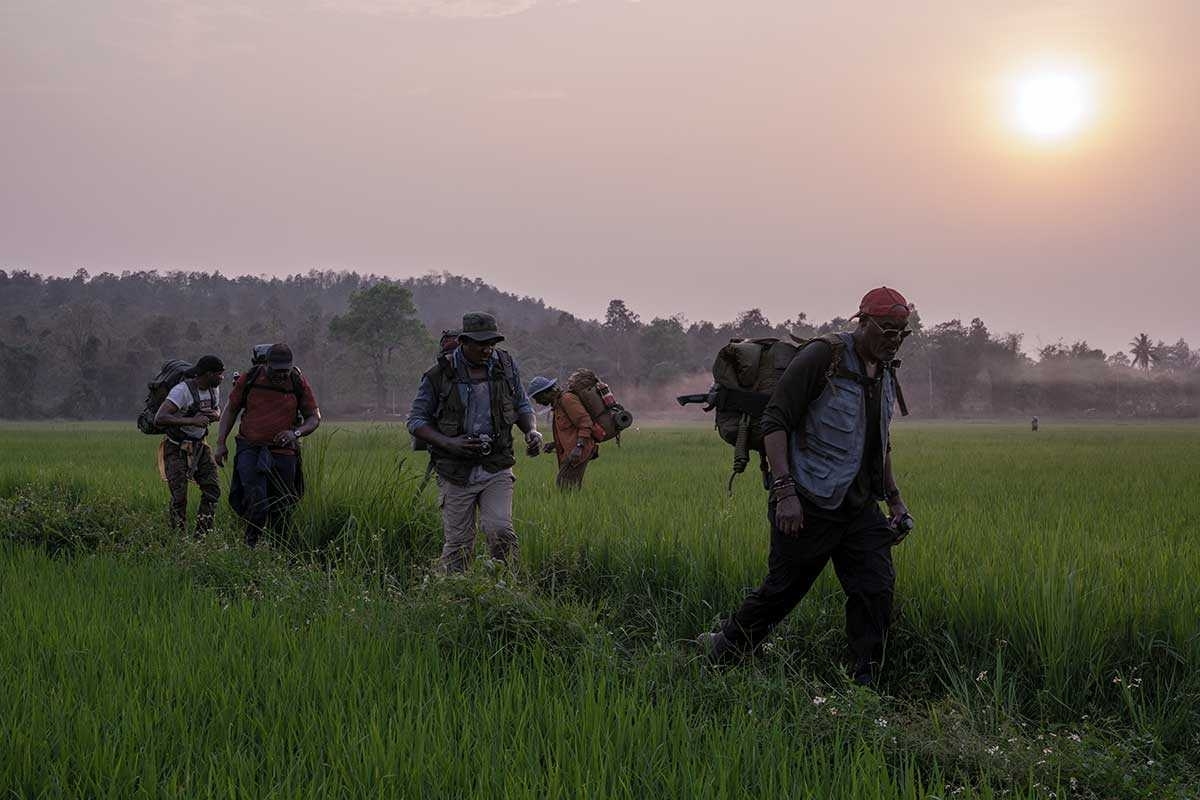
"DA 5 BLOODS" (L to R) JONATHAN MAJORS as DAVID, ISIAH WHITLOCK JR. as MELVIN, NORM LEWIS as EDDIE, CLARKE PETERS as OTIS, DELROY LINDO as PAUL of "DA 5 BLOODS." Cr. DAVID LEE /NETFLIX © 2020
At the behest of director Spike Lee to depict the intense, combat flashback sequences in Da 5 Bloods on celluloid film, DP Newton Thomas Sigel ASC selected the texture and vivid color palette of KODAK EKTACHROME Reversal Film stock to deliver the desired time-travelling effect.
“While the present-day scenes in the movie were shot digitally, Spike was insistent that the pivotal, historical episodes in the storytelling had to be filmed on 16mm celluloid, and, within that, to emulate the look-and-feel of archive newsreel footage that is peppered throughout the movie,” says Sigel. “So I suggested that we film these hard-hitting sequences, plus the scenes of enemy, radio propagandist Hanoi Hannah, on KODAK EKTACHROME [Film]. He loved that idea.”
Da 5 Bloods – which premiered on Netflix on June 12 and is expected to feature in the 2021 awards season – portrays the all-too-often overlooked role of black soldiers in conflicts, like the Vietnam War, in feature films, as well as highlighting the persistent traumatic effects of armed conflict upon the participants themselves and on future generations of their kinfolk.
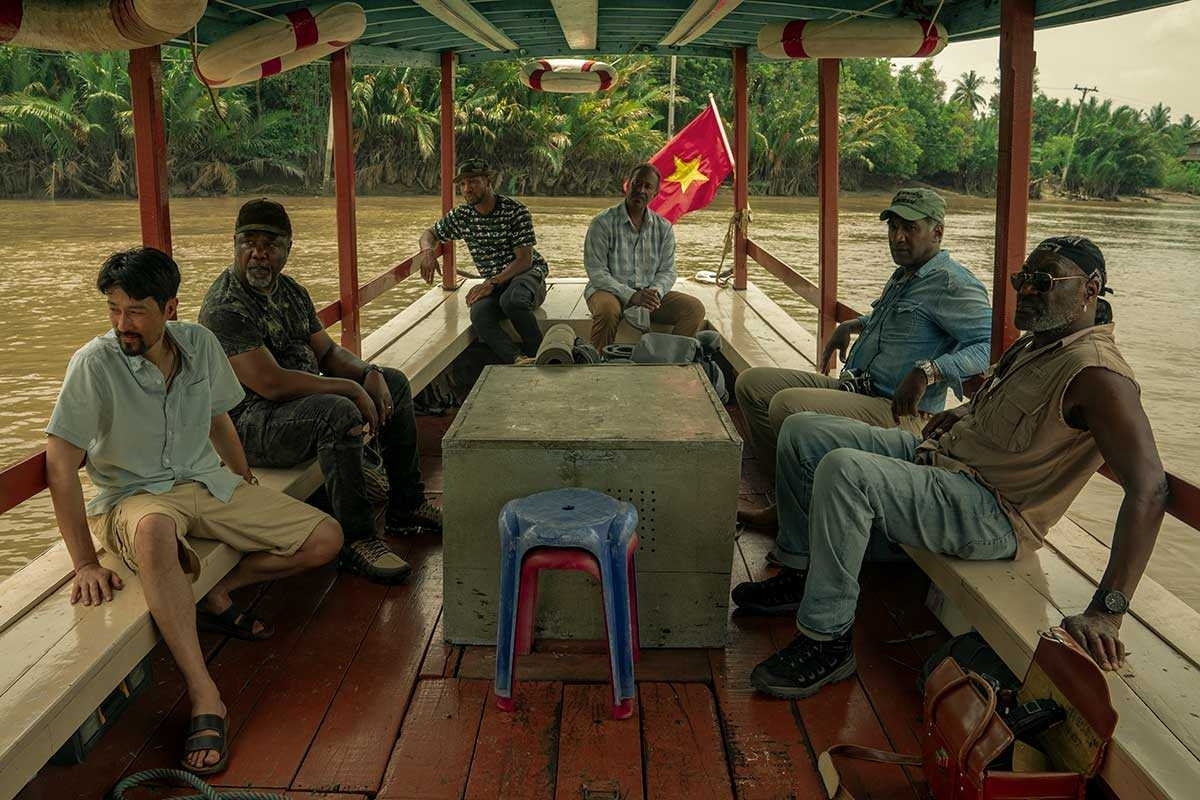
"DA 5 BLOODS:" (L to R) ISIAH WHITLOCK JR as MELVIN, JONATHAN MAJORS as DAVID, CLARKE PETERS as OTIS, NORM LEWIS as EDDIE, DELROY LINDO as PAUL in "DA 5 BLOODS." Cr. DAVID LEE/NETFLIX © 2020
The story follows a band of ageing black Vietnam veterans, the ‘bloods,’ who return several decades later to the country’s jungles searching for the remains of their commander, Stormin’ Norman, and to recover a trunk full of gold bullion which they buried after a particularly bloody combat engagement.
Da 5 Bloods stars Delroy Lindo (Paul), Clarke Peters (Otis), Isiah Whitlock Jr. (Melvin), Norm Lewis (Eddie) and Jonathan Majors (David, Paul’s son, who joins the group), with Chadwick Boseman as their leader Stormin’ Norman.
Using EKTACHROME 16mm Film to depict the brutal, action-packed flashbacks, the narrative unfolds across dual timelines of both the war’s immediate consequences and its enduring effects on the ‘bloods,’ whose personal lives are beset with bankruptcy, addiction, physical illness and deep-rooted PTSD.
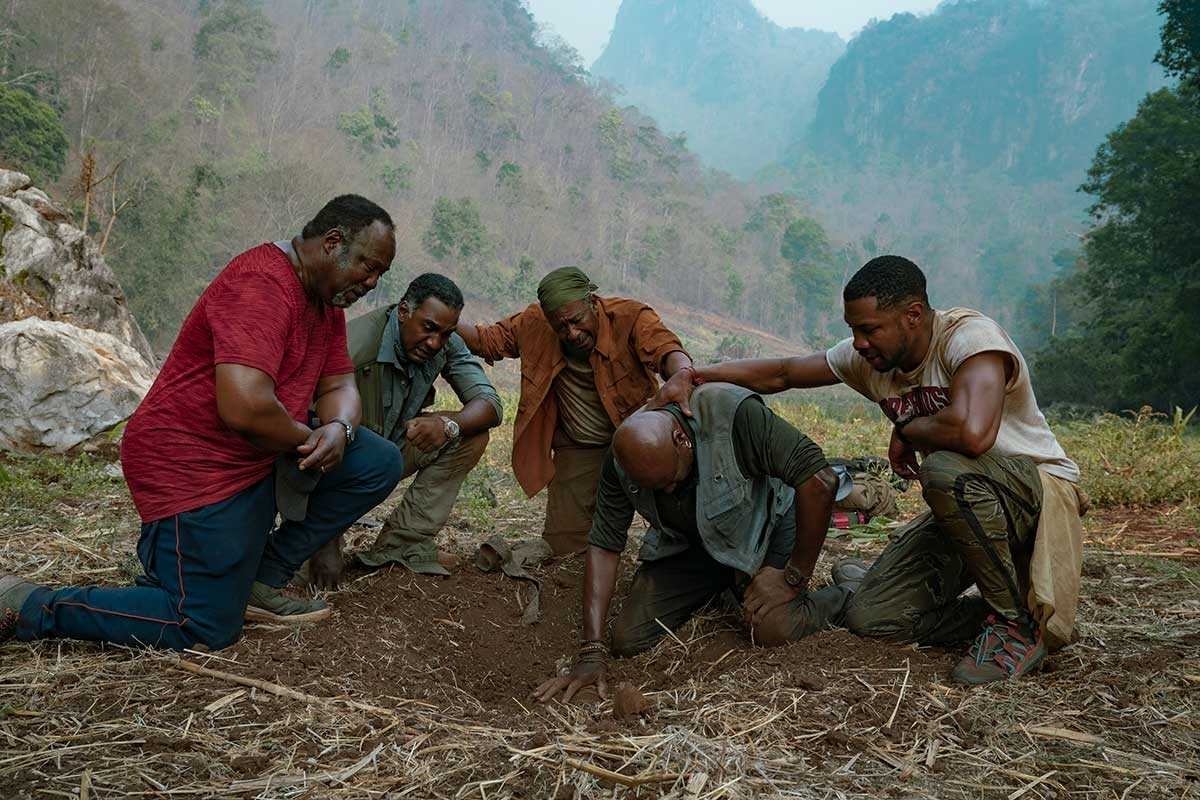
"Da 5 Bloods." Cr. DAVID LEE/NETFLIX © 2020
“Vietnam was really the first war to be televised,” says Sigel, who started his cinematography career in documentary filmmaking, including projects such as El Salvador: Another Vietnam (1981), that was nominated for an Academy Award for Best Documentary Feature.
“The color film shot by news crews in the Vietnam War was predominantly EKTACHROME [Film], 7241 and 7242, as well as the beautiful 7255 & 7252. This was also the beginning of color TV, and those images were how the American public perceived the conflict itself. I felt that, out of all the currently available filmstocks, the new KODAK EKTACHROME (7285) 100D 16mm Color Reversal [Film] was the closest representation to what the newsreel footage looked like back in the day.
He adds, “The color palette of EKTACHROME [Film] is very specific, with a striking vibrancy. Along with its grain structure, it is a very hard thing to reproduce in post. So it provided a great aesthetic connection to the past, at the same time delivering a contrast to the contemporary footage that we shot digitally.”
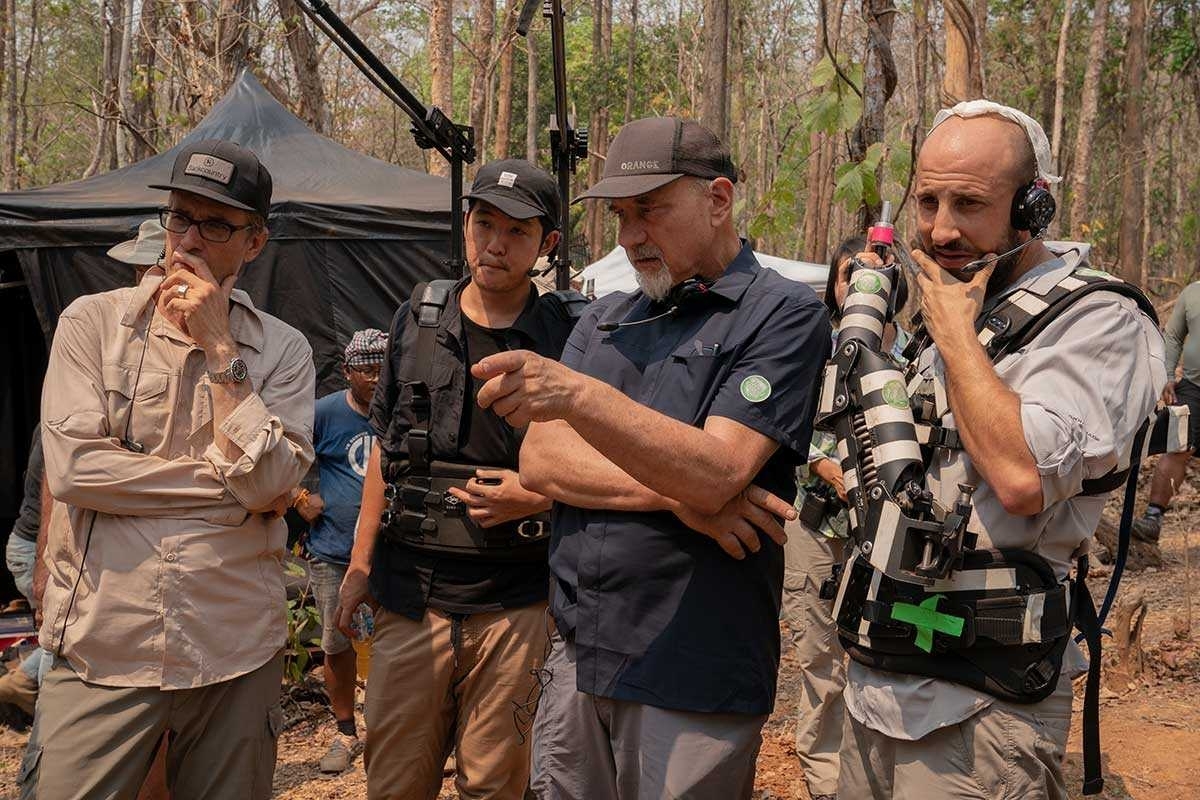
"DA 5 BLOODS:" CINEMATOGRAPHER NEWTON THOMAS SIGEL ASC (2nd right) WITH THE CAMERA CREW OF DA 5 BLOODS. Cr. DAVID LEE/NETFLIX © 2020
Sigel selected ARRI 416 16mm cameras, fitted with Zeiss Super Speed T1.3 and Canon zoom lenses of the period, for the flashback shoot which took place over the course of two sweltering weeks in the wilds of Thailand. The scenes with Hanoi Hannah were filmed at an interior location, specially dressed and lit in glamorous neo-noir style to mimic original photographs of her.
“Visually, we devised Da 5 Bloods with three predominant phases, each with its own color palette and aspect ratio,” explains Sigel. “There’s a clean, clear look in 2.40:1 for contemporary Ho Chi Minh City; the 1.85:1 frame with saturated greens and yellows for the jungle landscape; and then the 16mm EKTACHROME [Film] in 4:3 for flashbacks of the bloods during the war. I went with the EKTACHROME [Film] specifically to bring out a reddish, golden quality to the dirt, an electric blue to the skies, and to generally heighten the battlefield atmosphere through the textural qualities of the grain in the celluloid.
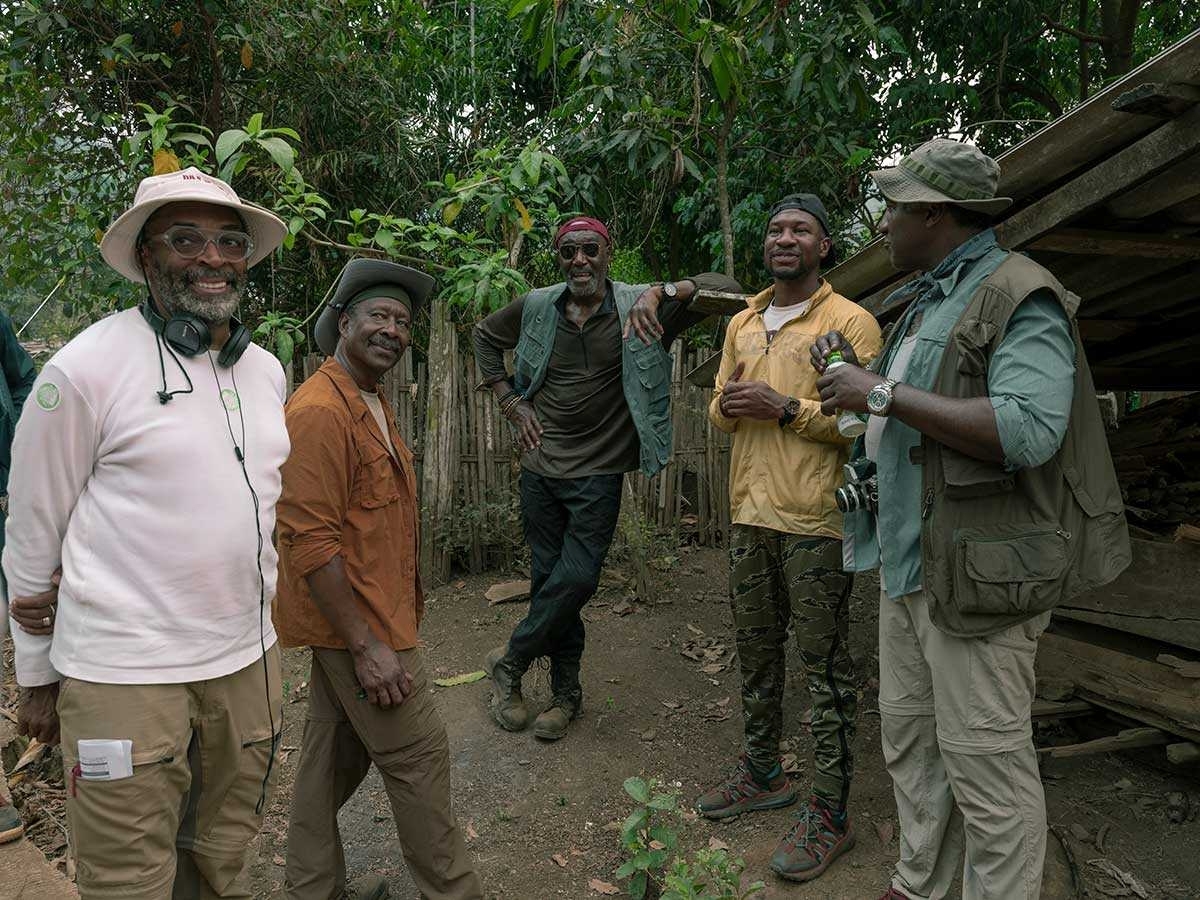
"Da 5 Bloods." Cr. DAVID LEE/NETFLIX © 2020
“During production, I rated the EKTACHROME [Film] at 80ASA, as I felt that giving it that little bit of extra exposure would help to see into the shadows. With reversal, there is very little room for error in exposure, especially when there is harsh direct sunlight. I took some poetic license from what a combat photographer would have done, by adding some fill to get shadow detail. With the hard, tropical light of Thailand, I was able to do that in the grip world, with large rags and reflectors predominantly.”
Along with 16mm EKTACHROME Film, the Super 8mm version of that filmstock was also used in a working Super 8mm camera operated by the actor Norman Lewis, who captured some of the action during the movie’s various travelogue scenes. E6 film processing was done at Pro8 in Los Angeles, with 16mm developing handled by Spectra Labs. 4K scanning of the selects at Company 3, where the final grade was done by Stephen Nakamura.

"DA 5 BLOODS:" (L to R) Production Designer WYNN THOMAS, CINEMATOGRAPHER NEWTON THOMAS SIGEL ASC and DIRECTOR SPIKE LEE of DA 5 BLOODS. Cr. DAVID LEE/NETFLIX © 2020
“I loved shooting with EKTACHROME [Film] on 16mm,” Sigel concludes, “It took me back to my roots of shooting documentary. There’s a nimbleness and mobility to the physical camera that I like. Visually, it has a homemade textural quality built-in, which means you don’t have to impose anything on the image later on down the line. The results look great and successfully took the story back in time. I also loved the irony of shooting Chadwick, our biggest star in the movie, on 16mm, while the rest of the cast was shot with large-format digital cameras.”